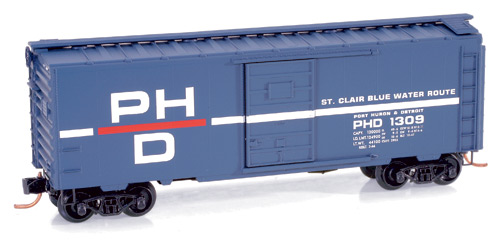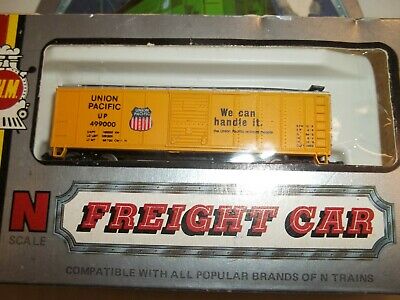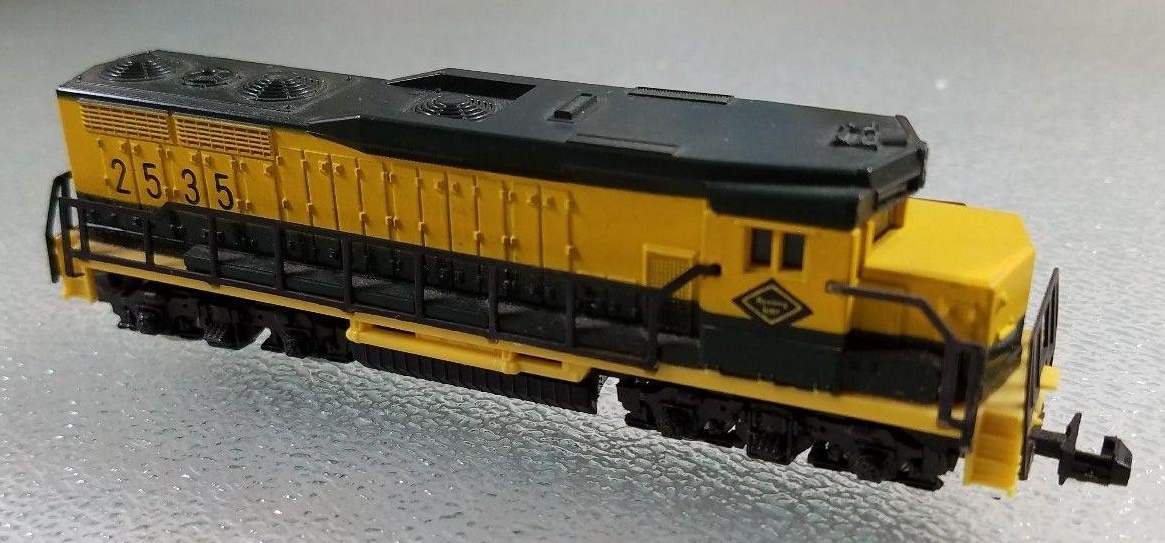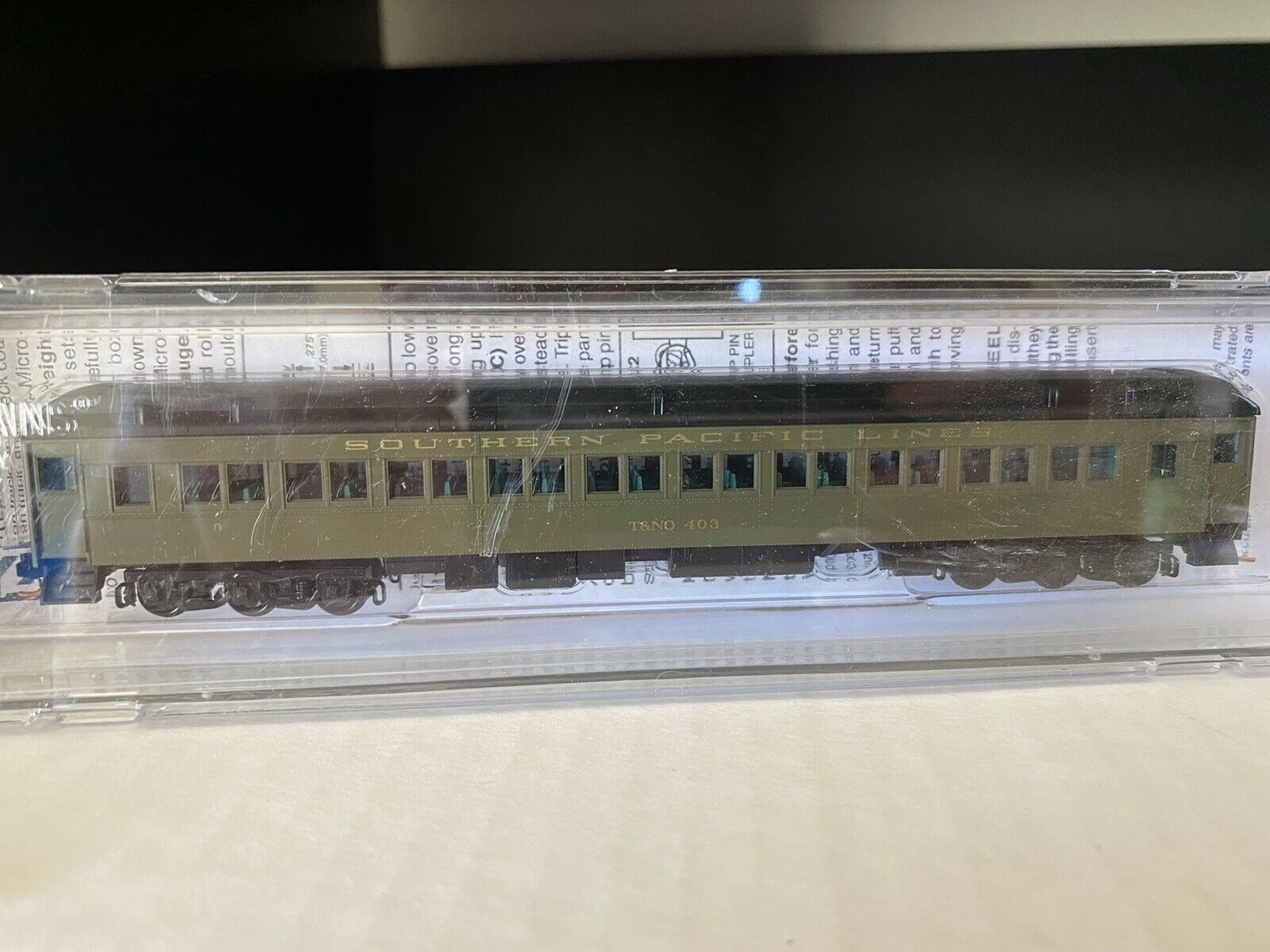Model Information: This body style was first produced by Lima for MRC, Model Power and AHM in the 1960s and 1970s. There are several versions of this car. One difference is some have a molded-on roof-walk, and another has a separate roof-walk. Also, one has deep ribs and the other has shallow ribs. The shallow rib version is likely the later tooling. The shallow rib version displays clearly visible rivet details. Model Power later made a knock-off of the shallow rib version in China.
Model Power refers to it as a 50' Reefer, but the model's length is actually 45' in N scale. Hence some refer to it as a 45' Reefer or 45' Isolated Boxcar, though to our knowledge no prototype was ever produced with that length.
Model Power refers to it as a 50' Reefer, but the model's length is actually 45' in N scale. Hence some refer to it as a 45' Reefer or 45' Isolated Boxcar, though to our knowledge no prototype was ever produced with that length.
Prototype History: The 50-foot boxcar made its first appearance in the 1930s and steadily grew in popularity over the years, which further improved redundancies by allowing for even more space within a given car. Today, the 50-footer remains the common boxcar size. After the second world war ended, and steel became once again readily available, steel became the go-to choice for construction of boxcars. Pullman Standard and ACF were some of the most prolific builders of these cars.
In the 1960s, the flush, "plug" style sliding door was introduced as an option that provides a larger door to ease loading and unloading of certain commodities. The tight-fitting doors are better insulated and allow a car's interior to be maintained at a more even temperature.
In the 1960s, the flush, "plug" style sliding door was introduced as an option that provides a larger door to ease loading and unloading of certain commodities. The tight-fitting doors are better insulated and allow a car's interior to be maintained at a more even temperature.
Road Name History:  The Swift Refrigerator Line (SRL, also known as the Swift Refrigerator Transportation Company) was a private refrigerator car line established around 1875 by Chicago meat packer Gustavus Swift, the founder of Swift and Company. Ad for the line from 1921. Shows sample Swift cars at the top and a map of the distribution locations.
The Swift Refrigerator Line (SRL, also known as the Swift Refrigerator Transportation Company) was a private refrigerator car line established around 1875 by Chicago meat packer Gustavus Swift, the founder of Swift and Company. Ad for the line from 1921. Shows sample Swift cars at the top and a map of the distribution locations.
Swift hoped to develop an alternative to transporting live cattle across the Midwest. He experimented by moving dressed (cut) meat using a string of ten boxcars which ran with their doors removed, and made a few test shipments to New York during the winter months over the Grand Trunk Railway (GTR). The method proved too limited to be practical.
In 1878, Swift hired engineer Andrew Chase to design a ventilated car that was well-insulated, and positioned the ice in a compartment at the top of the car, allowing the chilled air to flow naturally downward. The meat was packed tightly at the bottom of the car to keep the center of gravity low and to prevent the cargo from shifting. Chase's design proved to be a practical solution to providing temperature-controlled carriage of dressed meats, and allowed Swift & Company to ship their products all over the United States, and even internationally, and in doing so radically altered the meat business.
The General American Transportation Corporation (GATX) assumed ownership of the line in 1930.
From Wikipedia

Swift hoped to develop an alternative to transporting live cattle across the Midwest. He experimented by moving dressed (cut) meat using a string of ten boxcars which ran with their doors removed, and made a few test shipments to New York during the winter months over the Grand Trunk Railway (GTR). The method proved too limited to be practical.
In 1878, Swift hired engineer Andrew Chase to design a ventilated car that was well-insulated, and positioned the ice in a compartment at the top of the car, allowing the chilled air to flow naturally downward. The meat was packed tightly at the bottom of the car to keep the center of gravity low and to prevent the cargo from shifting. Chase's design proved to be a practical solution to providing temperature-controlled carriage of dressed meats, and allowed Swift & Company to ship their products all over the United States, and even internationally, and in doing so radically altered the meat business.
The General American Transportation Corporation (GATX) assumed ownership of the line in 1930.
From Wikipedia
Brand/Importer Information: 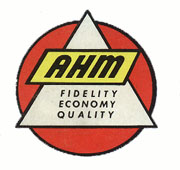 AHM is the initials for Associated Hobby Manufacturers, Inc. The company was founded in 1959 as a reseller of other companies' model railroad components. Initially an HO company, they entered into N Scale in the early 1970's as an importer of products made by Roco in Austria. For N Scale products, AHM apparently contracted to use the exact same molds as were used by Roco to produce early Atlas models. They also contracted with Rivarossi to make locomotives.
AHM is the initials for Associated Hobby Manufacturers, Inc. The company was founded in 1959 as a reseller of other companies' model railroad components. Initially an HO company, they entered into N Scale in the early 1970's as an importer of products made by Roco in Austria. For N Scale products, AHM apparently contracted to use the exact same molds as were used by Roco to produce early Atlas models. They also contracted with Rivarossi to make locomotives.
When AHM went out of business IHC picked up some of their line. Also, at least one body style was taken over by Eastern Seaboard models.

When AHM went out of business IHC picked up some of their line. Also, at least one body style was taken over by Eastern Seaboard models.
Manufacturer Information:  Lima S.p.A (Lima Models) was a brand of railway models made in Vicenza, Italy, for almost 50 years, from the early 1950s until the company ceased trading in 2004. Lima was a popular, affordable brand of 00 gauge and N gauge model railway material in the UK, more detailed H0 and N gauge models in France, Germany, Italy, Switzerland, and the United States as well as South Africa, Scandinavia and Australia. Lima also produced a small range of 0 gauge models. Lima partnered with various distributors and manufacturers, selling under brands such as A.H.M., Model Power, Minitrain and PMI (Precision Models of Italy). Market pressures from superior Far Eastern produce in the mid-1990s led to Lima merging with Rivarossi, Arnold, and Jouef. Ultimately, these consolidations failed and operations ceased in 2004.
Lima S.p.A (Lima Models) was a brand of railway models made in Vicenza, Italy, for almost 50 years, from the early 1950s until the company ceased trading in 2004. Lima was a popular, affordable brand of 00 gauge and N gauge model railway material in the UK, more detailed H0 and N gauge models in France, Germany, Italy, Switzerland, and the United States as well as South Africa, Scandinavia and Australia. Lima also produced a small range of 0 gauge models. Lima partnered with various distributors and manufacturers, selling under brands such as A.H.M., Model Power, Minitrain and PMI (Precision Models of Italy). Market pressures from superior Far Eastern produce in the mid-1990s led to Lima merging with Rivarossi, Arnold, and Jouef. Ultimately, these consolidations failed and operations ceased in 2004.
Hornby Railways offered €8 million to acquire Lima's assets (including tooling, inventory, and the various brand names) in March of the same year, the Italian bankruptcy court of Brescia (town near Milan, last headquarters of Lima) approving the offer later that year. In December 2004, Hornby Railways formally announced the acquisition along with the Rivarossi (H0 North American and Italian prototypes), Arnold (N scale European prototypes), Jouef (H0 scale French prototypes), and Pocher (die-cast metal automobile kits) ranges. As of mid-2006, a range of these products has been made available under the Hornby International brand, refitted with NEM couplings and sprung buffers and sockets for DCC (Digital Command Control) decoders.
From Wikipedia

Hornby Railways offered €8 million to acquire Lima's assets (including tooling, inventory, and the various brand names) in March of the same year, the Italian bankruptcy court of Brescia (town near Milan, last headquarters of Lima) approving the offer later that year. In December 2004, Hornby Railways formally announced the acquisition along with the Rivarossi (H0 North American and Italian prototypes), Arnold (N scale European prototypes), Jouef (H0 scale French prototypes), and Pocher (die-cast metal automobile kits) ranges. As of mid-2006, a range of these products has been made available under the Hornby International brand, refitted with NEM couplings and sprung buffers and sockets for DCC (Digital Command Control) decoders.
From Wikipedia
Item created by: gdm on 2018-08-31 10:44:17. Last edited by Alain LM on 2021-11-18 13:28:56
If you see errors or missing data in this entry, please feel free to log in and edit it. Anyone with a Gmail account can log in instantly.
If you see errors or missing data in this entry, please feel free to log in and edit it. Anyone with a Gmail account can log in instantly.




